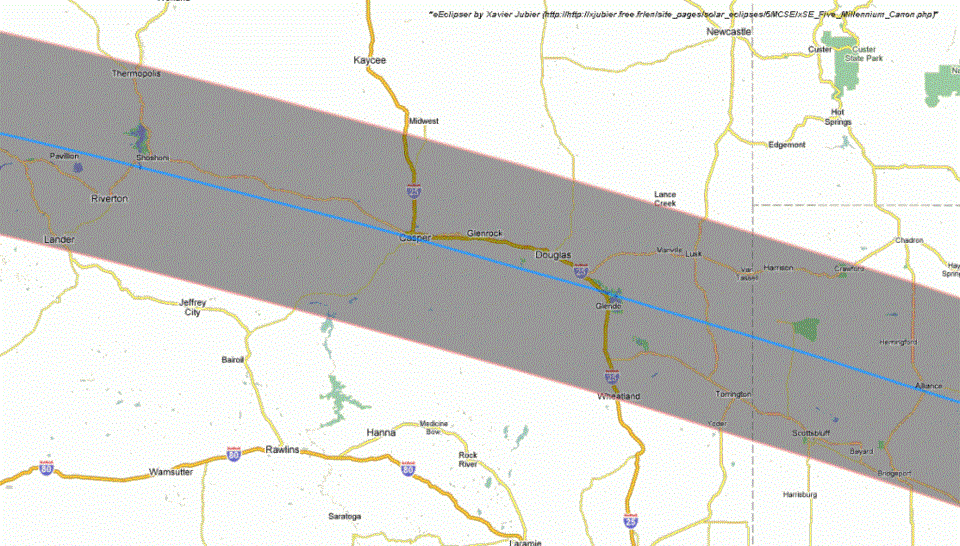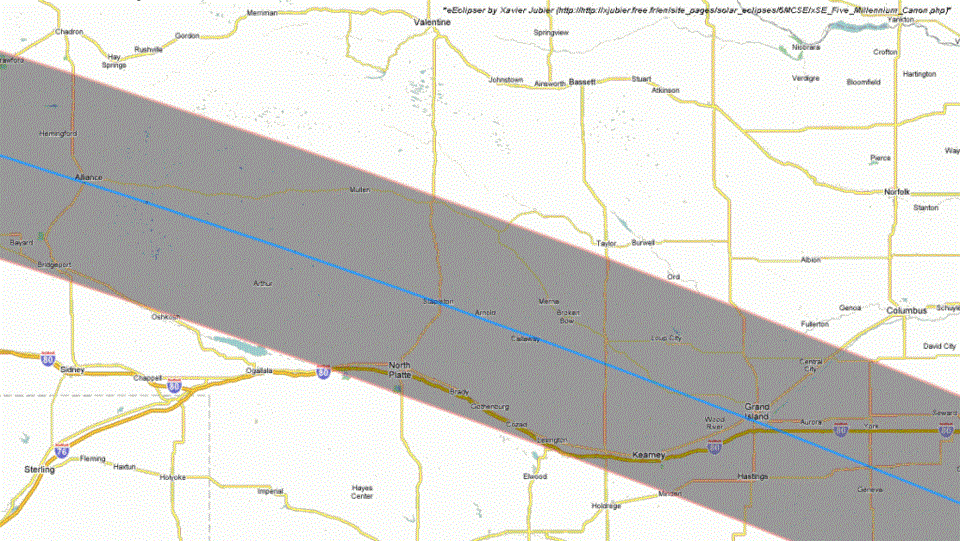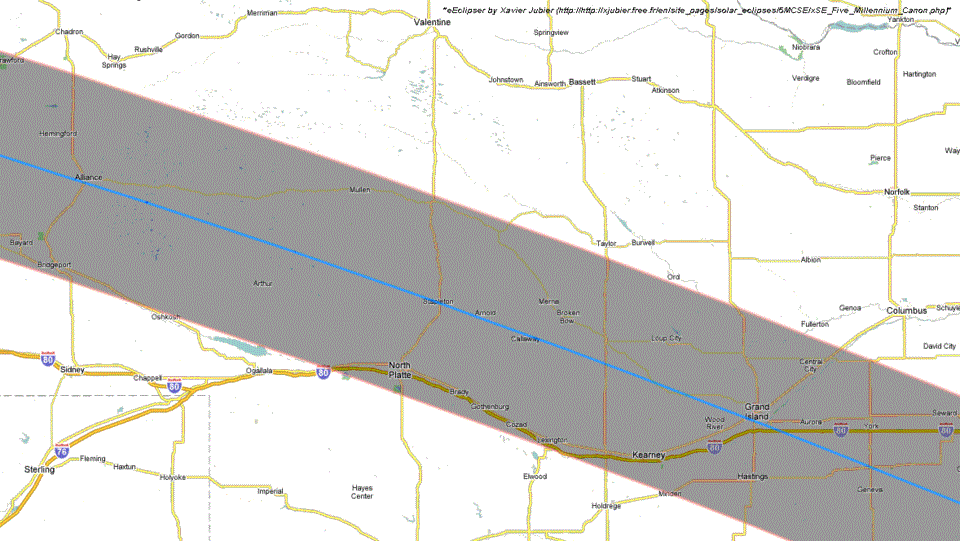This content was originally published by the Longmont Observer and is licensed under a Creative Commons license.
Special Eclipse Feature – part 2 - From the Cherrywood Observatory
By: John Ensworth
For this second part of our eclipse coverage, I’ll reproduce Friday’s press release from NASA. It is chock full of useful observing safety information.
July 21, 2017
RELEASE 17-063
NASA Recommends Safety Tips to View the August Solar Eclipse
More than 300 million people in the United States potentially could directly view the Aug. 21 total solar eclipse, and NASA wants everyone who will witness this celestial phenomenon to do so safely.
That Monday, a partial eclipse will be visible in every state. A total solar eclipse, which is when the Moon completely covers the Sun, will occur across 14 states in the continental U.S. along a 70-mile-wide (112-kilometer-wide) swath of the country.
It’s common sense not to stare directly at the Sun with your naked eyes or risk damaging your vision, and that advice holds true for a partially eclipsed Sun. But, only with special-purpose solar filters, such as eclipse glasses or a handheld solar viewer, you can safely look directly at the Sun.
NASA recommends that people who plan to view the eclipse should check the safety authenticity of viewing glasses to ensure they meet basic proper safety viewing standards.
Eclipse viewing glasses and handheld solar viewers should meet all the following criteria:
· Have certification information with a designated ISO 12312-2 international standard
· Have the manufacturer’s name and address printed somewhere on the product
· Not be used if they are older than three years, or have scratched or wrinkled lenses
· Not use homemade filters, or be substituted for ordinary sunglasses -- not even very dark ones -- because they are not safe for looking directly at the Sun.
“While NASA isn’t trying to be the eclipse safety glasses ‘police,’ it’s our duty to inform the public about safe ways to view what should be a spectacular sky show for the entire continental United States,” said Alex Young, associate director for science in the Heliophysics Science Division at NASA's Goddard Space Flight Center in Greenbelt, Maryland. “It’s important that individuals take the responsibility to check they have the proper solar eclipse viewing glasses. With the eclipse a month away today, it’s prudent to practice ahead of time.”
An alternative method for safe viewing of the partially-eclipsed Sun is with a pinhole projector. With this method, sunlight streams through a small hole – such as a pencil hole in a piece of paper, or even the space between your fingers – onto a makeshift screen, such as a piece of paper or the ground. It’s important to only watch the screen, not the Sun. Never look at the Sun through the pinhole -- it is not safe.
NASA has coordinated with medical and science professionals to provide additional safety information. For details, visit:
https://eclipse2017.nasa.gov/safety
More than 6,800 libraries across the U.S. are distributing safety-certified glasses. Many are working with scientists to hold viewing events and activities before and during the eclipse. For a listing of participating libraries, visit:
https://www.starnetlibraries.org/2017eclipse
NASA Television is offering a special live program, “Eclipse Across America: Through the Eyes of NASA” with real-time coverage of the event from coast to coast. The nearly four-hour program will include unprecedented images of the Aug. 21 eclipse from numerous spacecraft -- including the International Space Station – high-altitude aircraft and balloons, and ground observations. Each will offer a unique vantage point for the eclipse. Additionally, the broadcast will include live coverage of activities in parks, libraries, stadiums, festivals and museums across the nation, and on social media. To watch the Aug. 21 NASA TV eclipse broadcast online and access interactive web content and views of the eclipse from these assets, visit:
https://www.nasa.gov/eclipselive
-end-
Press Contacts
Dwayne Brown / Laurie Cantillo
Headquarters, Washington
[email protected] / [email protected]
Karen Fox
Goddard Space Flight Center, Greenbelt, Md.
Our second batch of useful Eclipse Information links (pulled from the article above):
The NASA Eclipse Safety: https://eclipse2017.nasa.gov/safety
Libraries giving out certified safe sun observation glasses (for before and after totality): https://www.starnetlibraries.org/2017eclipse
Live NASA TV coverage during the eclipse (if you have internet in the path, or if you can’t make the trip): https://www.nasa.gov/eclipselive
Figure 1 and 2 show the nearby path of totality (a different base map from day 1).
Figure 1: The path of totality in Wyoming.

Figure 2: The path of totality in Nebraska.

Bio:
John Ensworth works from Longmont as the Principle Investigator for the NASA Science Mission Directorate Earth and space science education product review through the IGES (The Institute for Global Environmental Strategies – www.strategies.org) . He is in his 14th year running this review. He is an astronomer (from the 2nd grade onward) and became a meteorologist (in the 5th grade) when a thunderstorm in Arizona rained on his telescope when the weather service had only forecasted a 10% chance of rain. He has college degrees in physics and astronomy and climatology and a graduate degree in meteorology and earth science. He lectures at the Little Thompson Observatory in Berthoud, the Estes Park Memorial Observatory in Estes Park, and for a number of online universities. He built and runs a backyard observatory near Pace and 17th in northeast Longmont where he has lived for 8 years with his wife, daughter, son, and two cats. Invitations to open house nights at this observatory, LTO, and EPMO will be posted with future discussions when they are scheduled.
Forecasting severe weather and snow amounts via text lead to this column. He began texting friends about the weather right after the September 2013 flood. The readers of this column will, hopefully, keep him honest in what he ‘thought’ he had forecasted for ‘the most recent’ storm.



